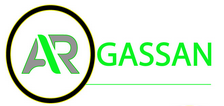Software development
Verification And Validation Wikipedia
From preliminary planning to implementation, the product should adhere to predefined standards. Code reviews, inspections, and static evaluation ensure the software is constructed correctly. This minimizes deviations and ensures consistency throughout the development course of. Validation in software program testing is the method of guaranteeing that a product meets specified requirements and satisfies customer wants.
Verification involves activities like code critiques, inspections, and static evaluation to ensure every part of improvement aligns with predefined requirements and specifications. Validation makes use of testing and user suggestions to have a look at factors like functionality and usefulness to substantiate that the software program meets the necessities of its client and end-users. Verification in software testing is the method of evaluating software artifacts to determine whether or not they meet specified necessities and requirements. It ensures that the product is built accurately and includes activities like reviews, inspections, and walkthroughs to determine defects early within the improvement cycle. Verification checks if a product meets specified requirements and is finished throughout improvement. For instance, in software program, verifying code syntax is appropriate (verification) and ensuring the software program meets consumer necessities (validation).
Web Growth
These kind of validation tests ensures only that your current location meets your anticipated criteria. As stated previously, verification checks must be run at every stage of the SDLC earlier than finalizing any function of the appliance. A few verification methods https://www.globalcloudteam.com/ are inspection, code review, desk-checking, and walkthroughs. By understanding and applying these concepts correctly, organizations decrease the room for error, keep away from redundant efforts, and optimize resource allocation, resulting in cost-saving benefits.
- Validation and verification are the 2 essential processes within the Software Development Life Cycle, and every has its distinct aim and purpose.
- Here, you solely give consideration to the output and don’t consider the interior course of and technical complexities concerned within the growth course of.
- Verification activities start initially of the SDLC and take place all through each growth section.
- Verification involves checking if a product meets specified necessities, guaranteeing correctness, whereas validation evaluates if the product satisfies person needs.
- Developers have been verifying and validating their work for the reason that advent of software engineering, structured programming methodologies, and quality-management ideas.
- The main objective of validation is to determine whether or not the software program meets the wants and expectations of its finish users and stakeholders.
Verification may result in revisions in design or specification paperwork based mostly on issues or discrepancies. Validation would possibly require actual code modifications or additional growth to address person feedback or performance bottlenecks. In this blog on verification vs validation, an in-depth discussion on verification vs. validation must have given you a very clear concept of its distinction and its related concepts.
Verification is essential for guaranteeing the software program is built appropriately, and validation is important for making certain the right product is built to satisfy users’ expectations. Validation, on the other hand, is the process of evaluating the ultimate product to check whether it meets the business and person requirements. ” This step involves dynamic testing methods, together with executing the code, to verify the precise product’s performance in opposition to the expected outcomes.
Verifying Or Validating?
So, whether you are fully confused or simply fuzzy on the major points, hopefully we’ll make it crystal clear.
In the context of software program testing, verification testing ensures that software meets its requirements and adheres to predetermined standards. Validation solutions the query “Was the proper thing built?” or, “is the product being constructed the right product?” That’s to say, does the final product operate as anticipated or not? For example, validation can occur as unit testing, integrated testing, or even testing the complete system. The common which means of each words has one thing to do with confirming that a thing is true or correct. However, for the scope of this text, we’ll be studying in regards to the differences and similarities between verification and validation in the software growth process.
Nazneen Ahmad is an experienced technical author with over five years of experience within the software program growth and testing area. To enhance or optimize the validation process in software program testing, you want to comply with a few of its best practices, which are explained under. In the next part of this weblog on verification vs validation, we are going to see the most effective practices to follow when utilizing the validation course of. The next section of this weblog on verification vs validation discusses methodologies of the validation course of.

Validation is usually performed after the completion of the entire software development course of. Validation focuses solely on the output; it doesn’t concern itself about the inside processes and technical intricacies of the event course of. Differentiating between verification and validation in software testing is critical for profitable software program improvement and deployment. Knowing the difference allows clear communication and collaboration among staff members. The correct implementation of verification and validation processes ensures software quality and user satisfaction.
Key Differences Between Validation And Verification In Software Program Testing
Using verification testing, you would evaluation all the documentation and relevant necessities to make sure all the guidelines are established. Validation testing consists of perform and non-functional testing at the end of the event cycle to evaluate the final product and whether or not it meets the requirements for public consumption. Verification ensures that the software is built accurately, and validation ensures that it works correctly. By understanding these processes, organizations can successfully allocate assets and check exhaustively—both earlier than and after coding. Validation testing assesses whether the software program meets these needs and expectations. The main goal is to confirm that the product works like it was intended to work.

Developers have been verifying and validating their work since the creation of software program engineering, structured programming methodologies, and quality-management rules. They put little to no emphasis on formal software testing—especially not throughout definition of verification the entire improvement lifecycle. Verification and validation testing in software development have evolved over time. These testing approaches indicate an rising emphasis on high quality assurance.
Regardless of whether you’re verifying, validating or someplace between the 2, Plutora is a value stream administration resolution that can allow you to observe take a look at metrics throughout the complete enterprise. To further clarify verification and validation, let’s take a look at an example each. Discover the important thing to optimizing your software supply course of with our comprehensive eBook on Value Stream Management (VSM). Learn how leading organizations are streamlining their software program pipelines, enhancing quality, and accelerating delivery. If you had been asked to do a verification on a certain project however maintain off on the validation, the answer now would be a lot clearer. This is high-level testing and sometimes consists of regression testing, consumer testing, performance testing and so forth.
Software groups typically use a variety of validation methods, including White Box Testing (non-functional testing or structural/design testing) and Black Box Testing (functional testing). A clear delineation between verification and validation processes permits you to handle totally different elements of testing. The largest benefit to testing the best method is getting software program that meets or exceeds the expectations of the consumer and their customers. The validation component of the software program testing process includes validating the functionality, efficiency, and consumer satisfaction with the software. Unlike verification testing, validation testing all the time requires executing code. It involves varied forms of software testing, similar to unit tests, integration tests, regression tests, cross browser and cross system testing, and more.
This report should point out compliance with development requirements and design specs. The verification course of would verify that the room is being built to these specs. The builders would guarantee they’re buying the right supplies to assemble the room, like long-enough beams.
These ensure that every component (and, ultimately, the ultimate product) does what it was supposed to do. Validation in QA refers to the process of assessing whether a product, system, or software program meets specified requirements and satisfies its intended function. It ensures that the top result aligns with user expectations and industry requirements, enhancing overall high quality and reliability. Verification is the process of evaluating a system or element to determine whether or not it meets the required necessities.
Validation and verification are two important processes in software program development that serve distinct functions. Verification focuses on goal evaluation, ensuring that the software program is built correctly and adheres to the desired requirements. On the other hand, validation entails subjective analysis, assessing the software program’s usability, effectiveness, and consumer satisfaction. Verification primarily entails technical analysis, code inspections, and testing to make sure that the software program functions as intended and meets the desired requirements. It focuses on the technical elements of software program development, such as code correctness, adherence to requirements, and system behavior. Validation, however, emphasizes meeting the consumer’s wants and expectations.
